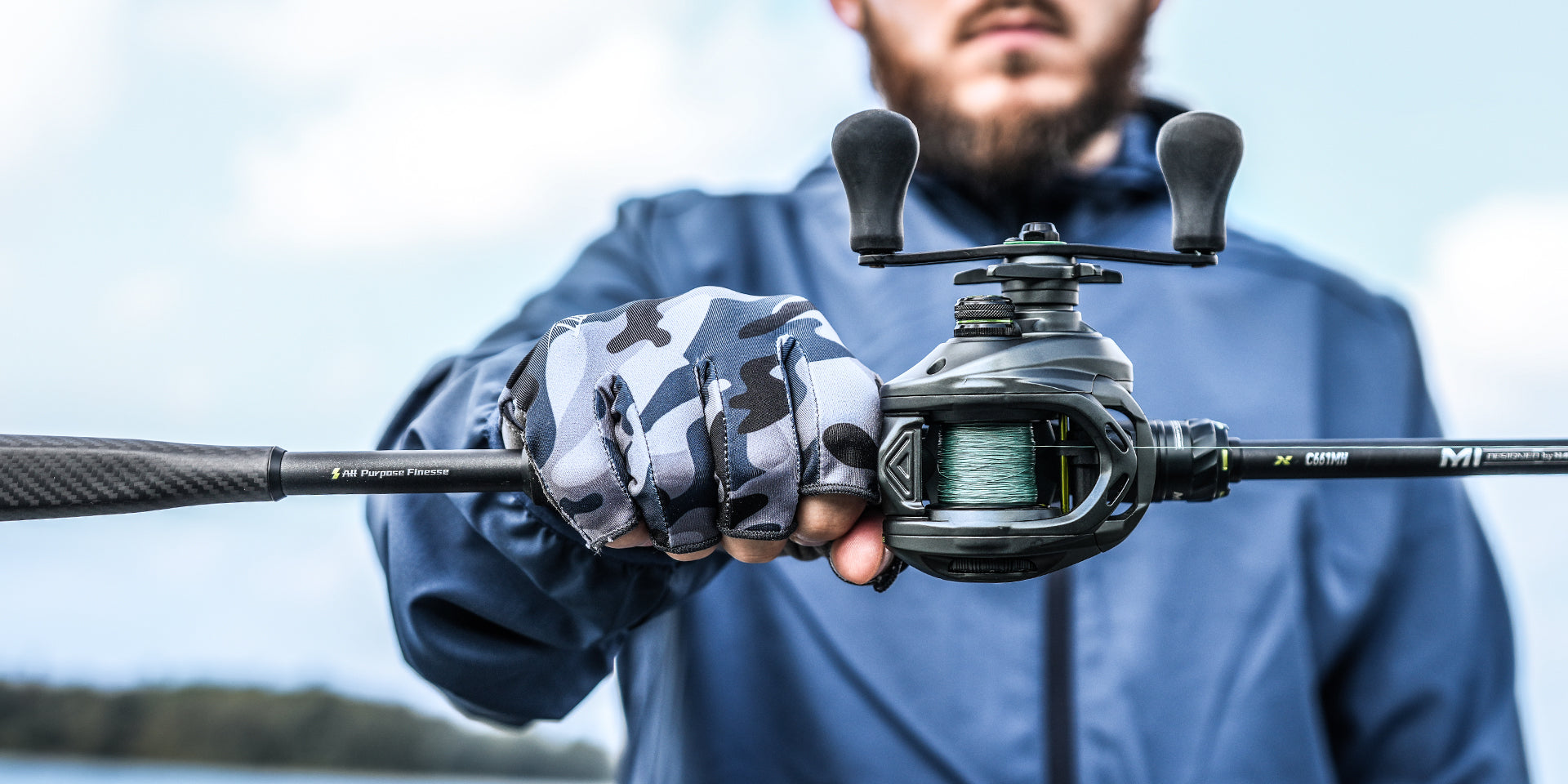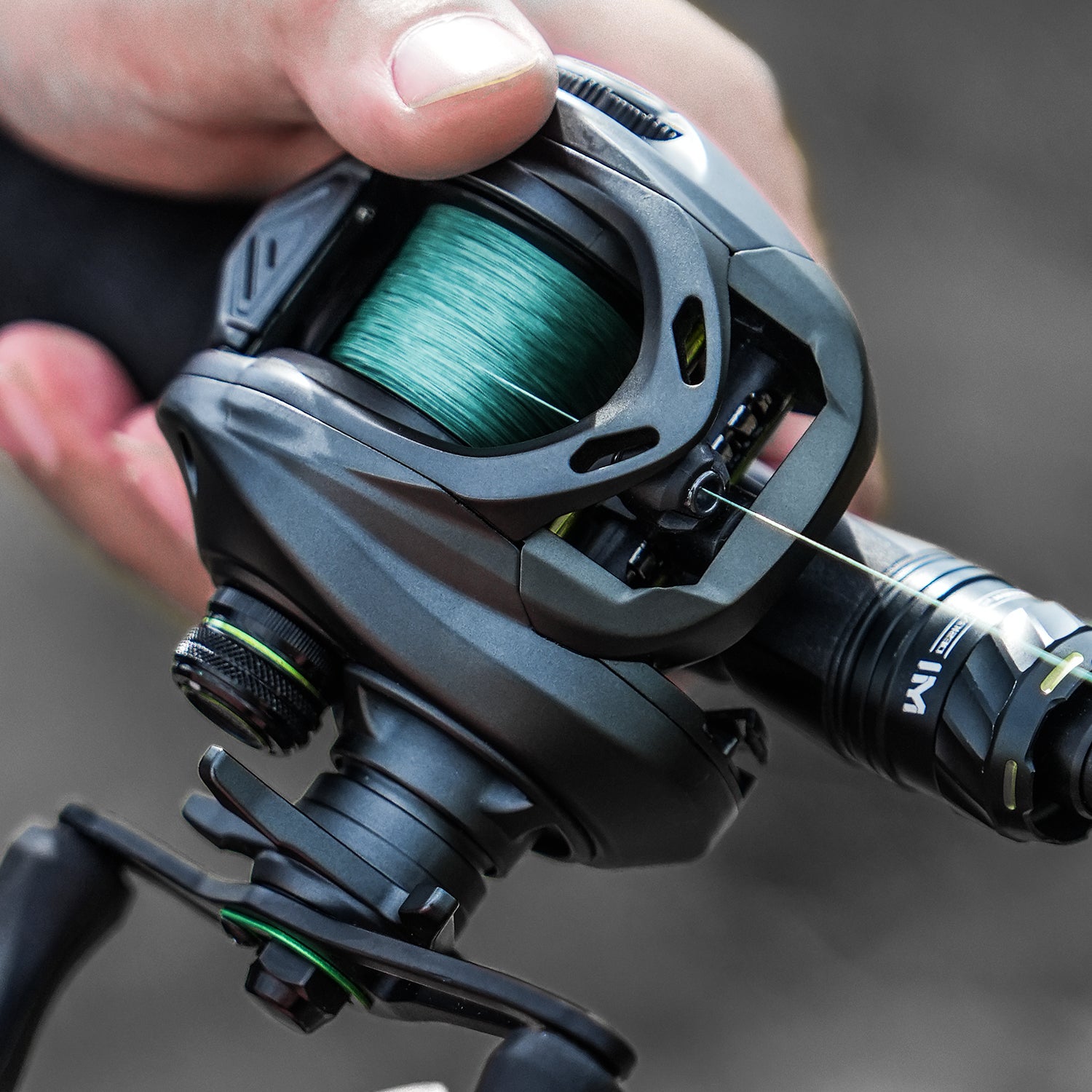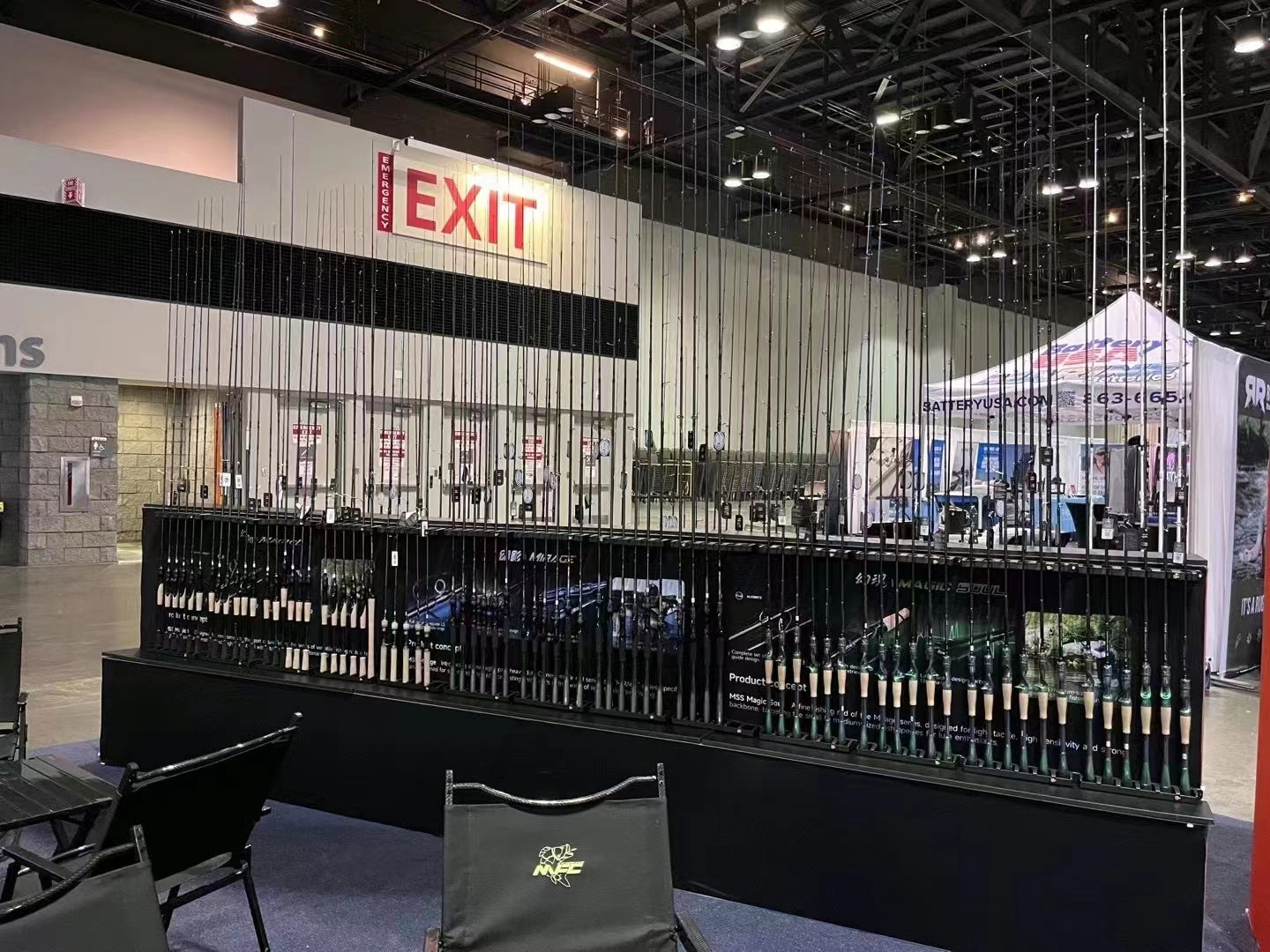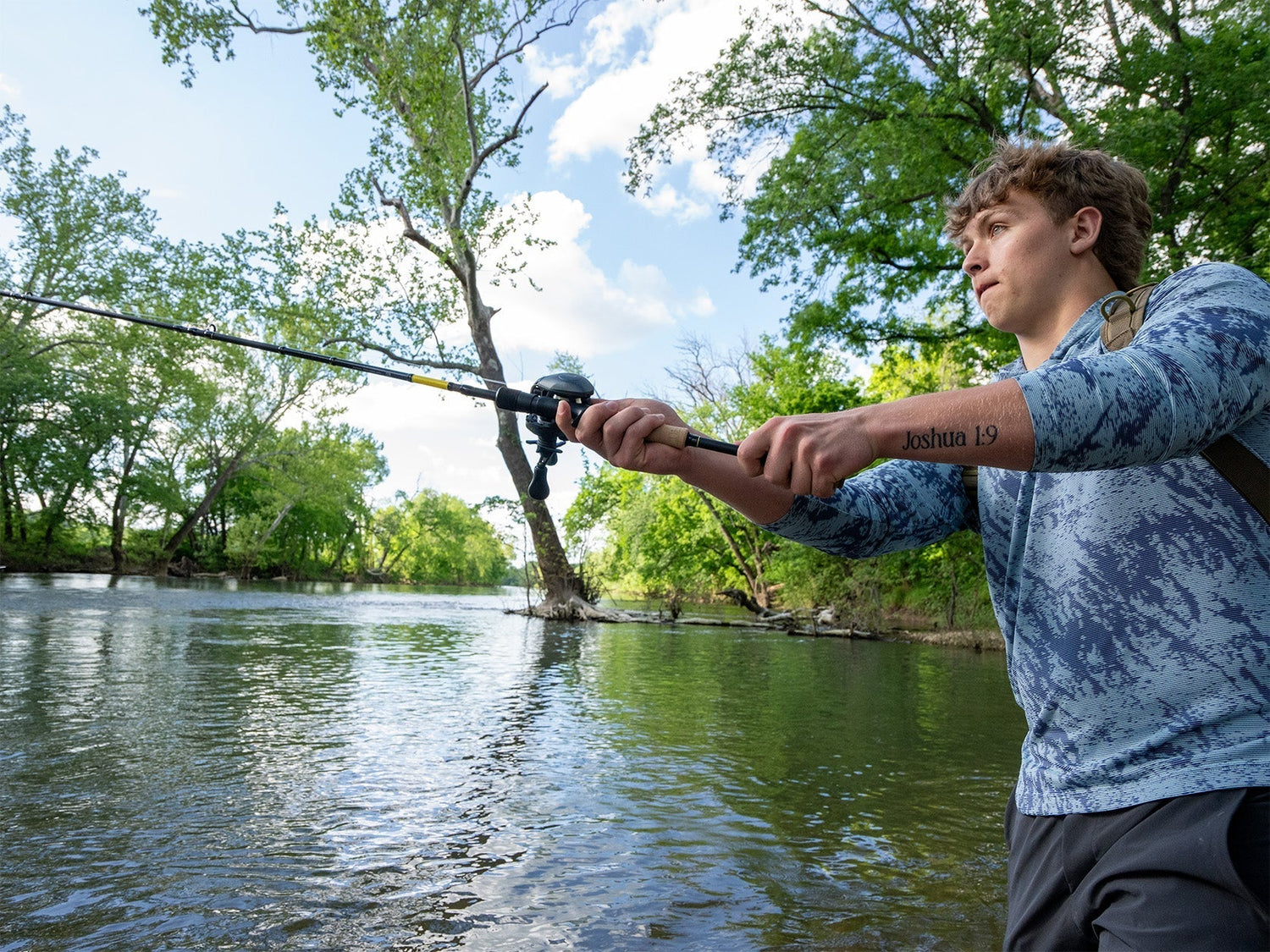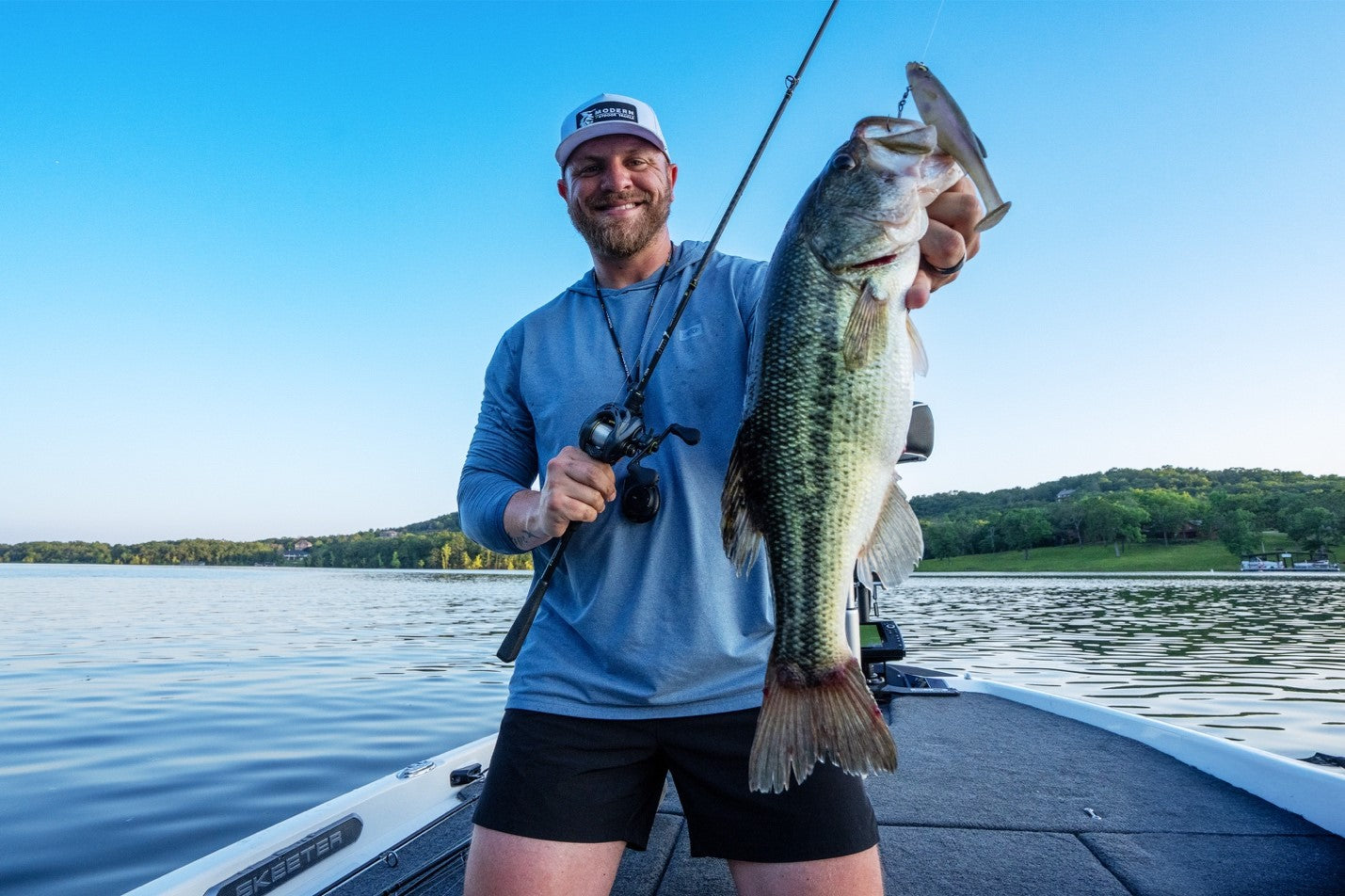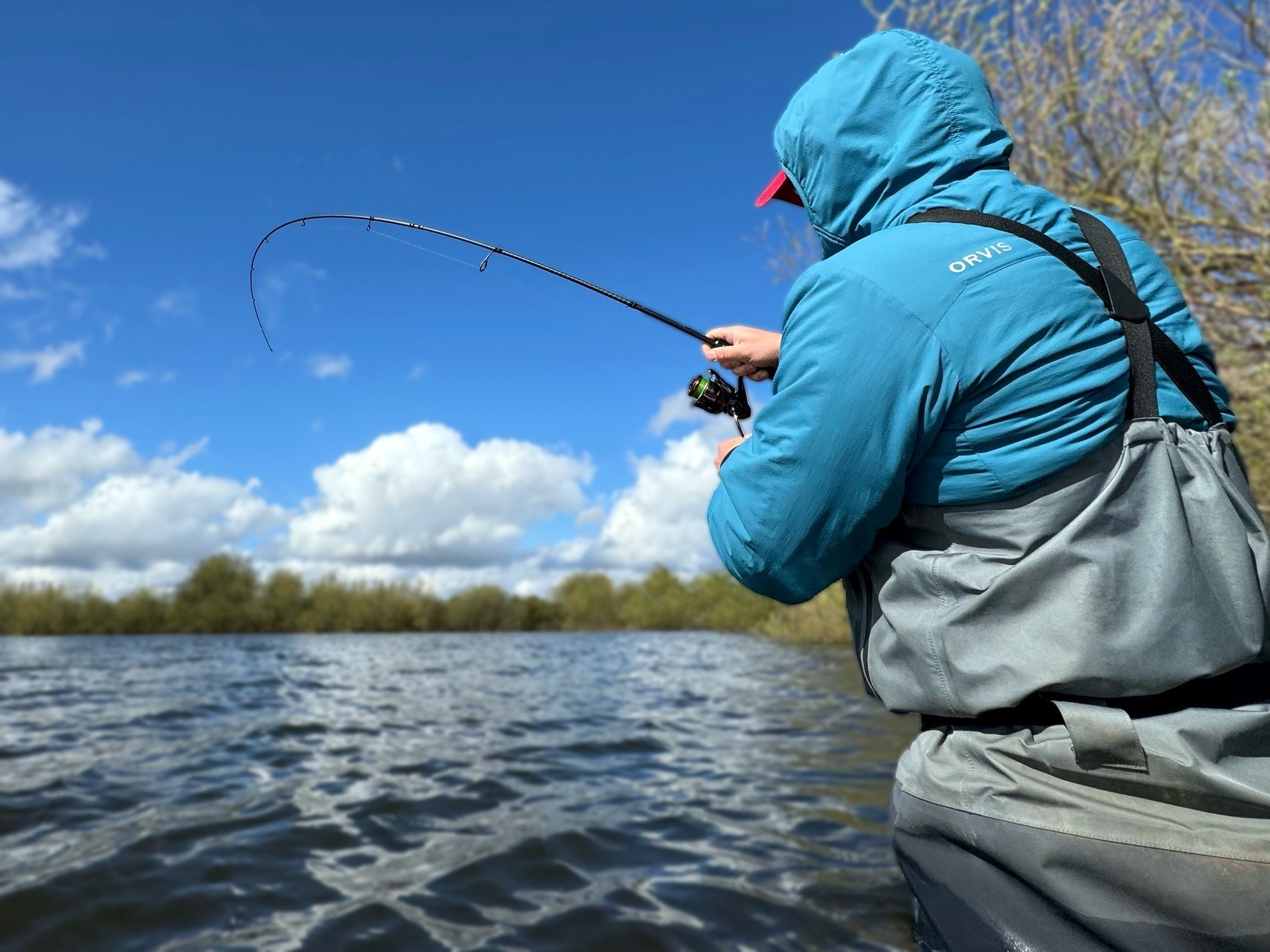Every angler has that one favorite setup. It’s the rod and reel that’s been with you through countless sunrises and memorable fights, the one that just feels right in your hands. But lately, you might have a nagging feeling that its best days are behind it. Knowing when to finally invest in a new rod or reel is a key part of growing as an angler. An upgrade isn't just about getting new toys; it's a strategic move to fish more effectively and, most importantly, have more fun on the water.
This guide walks through the telltale signs that your gear is holding you back, starting with the rod and then moving to the reel.
Part 1: When to Upgrade Your Fishing Rod
The fishing rod is your direct line of communication with the underwater world. It’s all about presentation, feel, and control. When a rod starts to fail, your whole game can feel off. Here’s how you can tell it’s time for a change.
1. Reading the 5 Signs of Wear
Has your casting lost its magic?
You’ll probably notice it in your cast first. Those effortless, laser-straight shots start feeling sluggish. Your fishing lures don’t quite reach their mark, or they land with less precision. This happens because a rod's blank, the core of its strength, fatigues over time. It loses that crisp, responsive power that used to send your lure flying.
Is the line going dead?
A good fishing rod lets you feel every pebble, weed, and subtle tap from a curious fish. That sensitivity is what turns a mystery nibble into a solid hookset. An old, worn-out rod starts to feel dull and lifeless, almost like you’re fishing with a wet noodle. If you’re getting that "I should have felt that bite" feeling, the rod is likely the culprit.
Are there weak spots in the blank?
Take a moment to run your hands down the length of the rod. You’re feeling for anything that isn't perfectly smooth and consistent—any flat spots, rough patches, or sections that seem to bend more than they should. Give the rod a gentle flex. The curve should be smooth and even. Any irregularity signals a weakness in the blank’s integrity, which could lead to a sudden break when you least expect it.
Are your guides and tip line-shredders?
Your line flows through the guides, so they need to be flawless. A cracked ceramic insert inside a guide creates a razor-sharp edge that will slice and fray your line, leading to those frustrating "it just snapped" moments. Even tiny, invisible grooves worn into the guides over time can weaken your line. Bent guide frames are just as bad, throwing off your line flow and hurting your cast.
Is the handle or reel seat getting sloppy?
The handle is where you connect with the rod. Crumbling cork or peeling foam grips are not just uncomfortable; they can make you lose your grip at a crucial moment. The reel seat is even more critical. If the threads are stripped or the hoods are loose, your reel will wobble. That tiny bit of instability throws off your entire rhythm and feel.
2. Matching the Rod to Your Fishing
Is it the right tool for the job?
You wouldn't bring a slingshot to a cannon fight, and the same logic applies to fishing. Using an ultralight fishing rod for powerful fish is asking for a broken rod and a story about the one that got away. On the flip side, using a heavy-duty rod for small panfish takes all the sport out of it. As your interests change and you start targeting different kinds of fish, you need to make sure your rod has the right amount of power.
Does your rod fit your favorite techniques?
A general-purpose rod can get you by, but specialized fishing calls for specialized tools. A fast-action rod with a stiff backbone and sensitive tip is perfect for feeling bites with jigs or plastics. A moderate-action rod, which bends more deeply, is much better for crankbaits because it absorbs the shock of a strike and helps keep treble hooks from tearing loose. If you’ve gotten really into a specific way of fishing, a purpose-built rod will feel like a total game-changer. Different rod types significantly affect how to cast various lure styles, with each requiring specific casting adjustments for optimal performance.
Are you fishing new types of water?
Your fishing spot has a big say in what rod works best. If you’re spending more time casting from the bank, a longer rod of seven and a half feet or more will give you the leverage for extra distance. But if you’re fishing from a kayak or navigating a creek with a lot of low-hanging branches, a shorter rod under seven feet will be much easier to handle and far more accurate in tight spaces.
Are you trying out new lures?
Every rod is designed to handle a specific range of lure weights, which is usually printed right on the blank. If you’re constantly throwing lures heavier than that range, you’re overloading the rod. This kills its casting performance and puts it at risk of breaking. If you want to start throwing bigger swimbaits, heavy rigs, or large crankbaits, you’ll need to step up to a rod with the backbone to handle them properly.

Part 2: When to Upgrade Your Fishing Reel
If the rod is about feel, the fishing reel is the engine. It handles the line, provides the muscle for the retrieve, and applies the steady pressure needed to land a fish. A reel on its way out can turn a great day into a frustrating one.
1. Spotting 5 Mechanical Problems
Is it making grinding noises?
Your reel's retrieve should feel smooth and sound quiet. If that familiar whir has been replaced by a gritty, grinding protest with every turn of the handle, there’s trouble inside. The cause is usually worn-down gear teeth or corroded bearings. A good cleaning might help, but if the grinding continues, it means the internal parts have permanent damage.
Can you trust your drag system?
A smooth, reliable drag might be the most important feature on a reel. When a fish makes a run, the drag should give line at a steady, consistent pressure. A jerky drag that sticks and then gives suddenly is what snaps lines and loses fish. If you can't count on your drag to perform flawlessly in that critical moment, it's time for a change.
Does the handle slip backward?
When you stop reeling, the handle should stop instantly, with no backward movement at all. That’s the job of the anti-reverse bearing. If the handle has started to slip back, even a little, the mechanism is failing. It makes for sloppy hooksets and can be jarring when a fish hits, causing you to lose a split second of control.
Is the bail on your spinning reel acting up?
The bail on a spinning reel sees a lot of action. It should flip over easily and lock into place with a satisfying click. A "soft" or loose-feeling bail is a sign of a weak spring. A bail that snaps shut in the middle of a hard cast will send your lure flying into the next county, and one that won’t close easily is just plain annoying.
Does the reel feel loose and wobbly?
Give your reel a good shake. Does the handle wobble back and forth? Does the spool have a little too much play in it? Any significant looseness or "play" means the internal parts are worn out and the reel’s tight tolerances are gone. That sloppiness will only get worse and will affect every part of the reel’s performance.
2. Keeping Up with Reel Technology
Could your casting be better?
Reel technology has improved a ton over the years. Modern baitcasting reels have incredibly sophisticated braking systems that give you amazing control, which means fewer frustrating backlashes. Spinning reels have also gotten better, with spool designs that let the line fly off with less friction for longer, smoother casts.
Is your retrieve speed right for your style?
The gear ratio on a reel determines how fast you can retrieve line. A high-speed reel is great for techniques where you need to pick up slack line in a hurry, like with topwater lures. A low-speed reel has more torque and cranking power, which is perfect for pulling baits with a lot of resistance, like deep-diving crankbaits.
Could you use a smoother drag?
While your old drag might seem fine, modern drag systems are on another level. They use materials like carbon fiber to provide a much wider, smoother, and more powerful range of pressure. Many newer reels also have sealed drags, which keep water and grit out of the delicate system, so you can count on it to work perfectly every time.
Are you tired of a heavy reel?
A full day of casting can wear you out, especially with a heavy setup. Reel manufacturers have made amazing progress in cutting weight by using advanced materials like carbon composites and lightweight aluminum alloys. Switching to a lighter, more ergonomic reel can make a huge difference in reducing fatigue, letting you fish comfortably for longer.

Get Your Gear Ready for Your Next Trip
In the end, you’re the only one who can decide if it's time to upgrade. By walking through this checklist, you can get a clear picture of whether your gear is helping you or holding you back. Don't wait for a broken part or a lost fish to make the decision for you. Take a few minutes to give your rod and reel an honest look. A smart upgrade, or just the confidence that your gear is in prime condition, is one of the best things you can do to make your next trip on the water a success.


